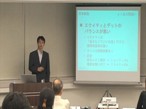Cloud Business: Cell Manufacturing of Cushions
Hello. This is Irino, a strategy consultant.
Today, I will explain tips on how to plan a cloud business in Japan.
Table of Contents in Business Plan
|
ASP’s business model is so called “Zabuton Business Model” in Japanese,which literally means “Cushion Business Model”. Cushion is a metapher of users or customers. As cushions piles up, sales volume goes up.
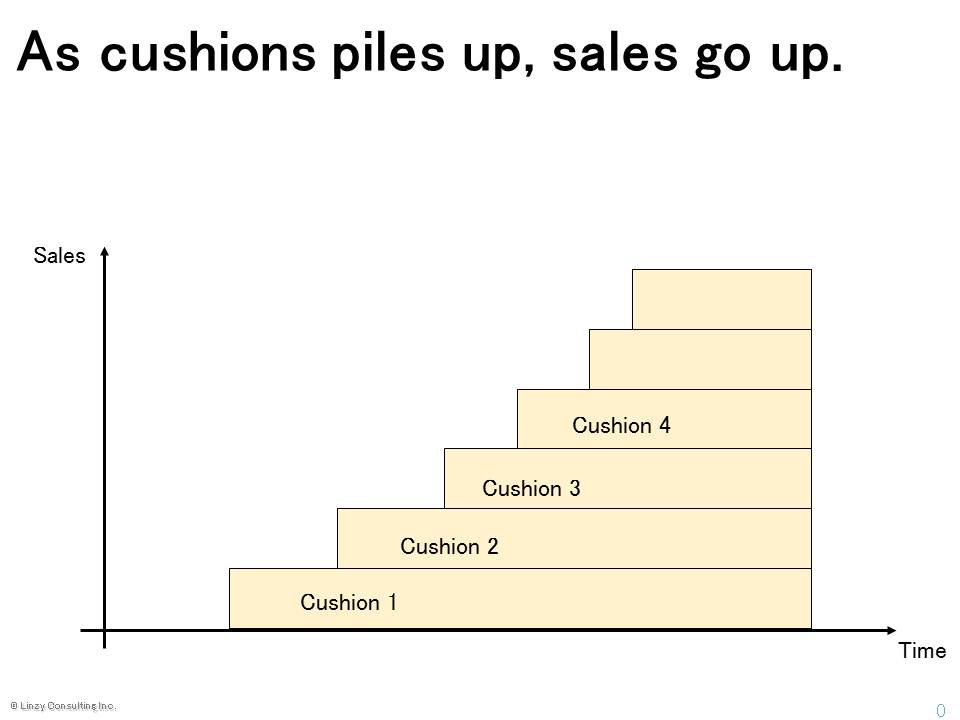
The merit of Cushion Business Model is that sales never go down once you pile up cushions. In other business models like custom system development, even if you earn sales of 10 million USD, you may go down to 8 million USD next year. In Cushion Business Model, once you earn 10 million USD, it is certain that you can keep more than 10 million USD next year. Sales doesn’t fluctuate in Cushion Business Model.
The demerit of Cushion Business Model is that you will have cash flow problem in the early phase. Until sales exceeds fixed cost, monthly cash flow remains minus, and profit loss accumulates.
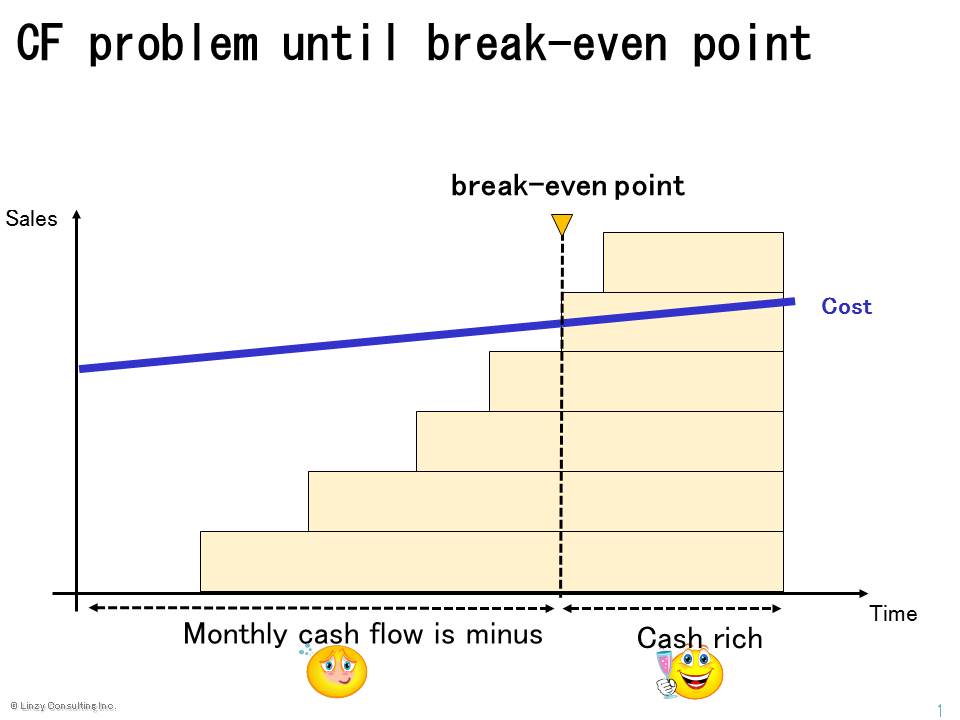
So, you need to raise funds to cover up the accumulated loss. But ASP business model is not easy to raise funds from banks. From banks’ viewpoint, ASP business model is not a very attractive in nature. An early-phase ASP company may go bankrupt right after banks have provided money. Once the company reaches break-even point, however, it doesn’t need cash any more, and so banks cannot increase their loan volume. Banks assumes that a ASP company is a high-risk-low-return customer. So, debt finance isn’t easy.
Equity finance isn’t easy, either. Before reaching break-even point, ASP companies typically need about 1.5 million USD to cover accumulated loss. This is more than founders and angel investors can afford. Neither can a single VC. You’ll need to convince more than two VCs to do syndicated investment, which is hard in the depressed Japanse capital market now.
So, what you really should do is to earn cash from revenue in non-ASP business.
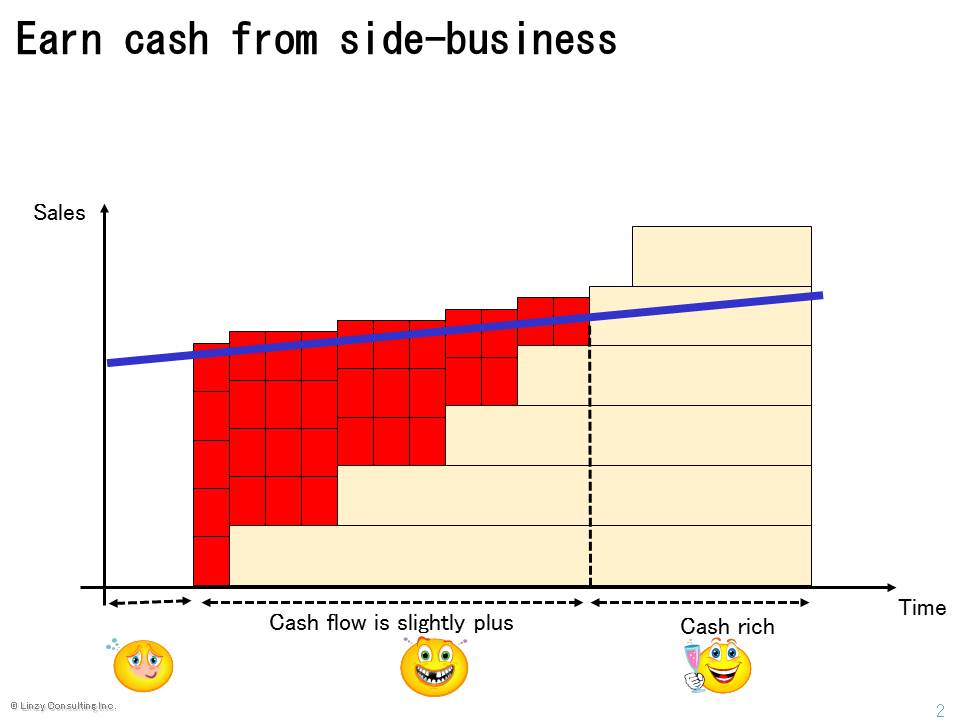
I guess you wish to choose a side-business close to your ASP in terms of market and technology. But don’t be picky about what type of job offers you will accept. Many of successful ASP companies have a history of accepting various side-business offers from custom system development to labor-intensive typing and data entry. It is not rare for early-stage ASP companies that sales from side-business occupy more than 50% of the whole sales. While you are in early stage of startup, it’s like you cannot see the light at the end of the long dark tunnel. You cannot predict when you can get monthly cash flow surplus.
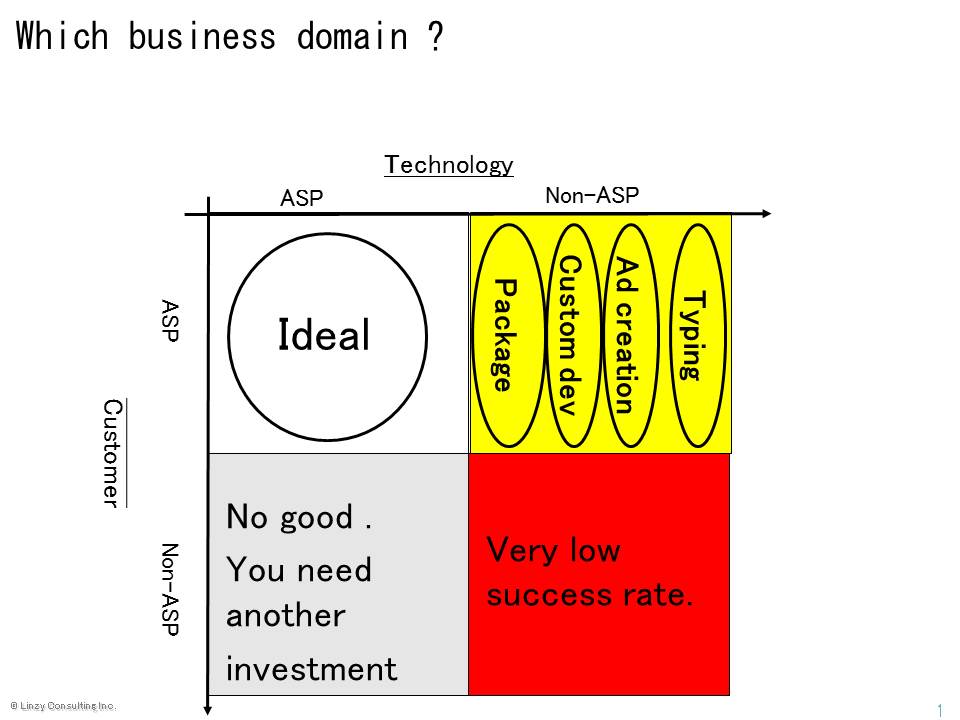
For the past 10 years, many ASP companies went bankrupt, and only a few survived. The difference between the dead and the alive was just that successful companies survived by throwing their pride to the wind to get cash from side-business. The competition of ASP is like a Last Man Standing fighting match. It takes time for a ASP to penetrate market. All you can do is lower your Burn Rate as much as possible and keep standing in a fighting pose.
I often read business plans that claims like:
“Our ASP system is so brilliant and sales partners can sell a lot.” or
“We’ll focus on deveoloping system, and provide OEM to sales partners.”
However in reality, sales strategy which depends too much on partners doesn’t work for ASP.
The first reason is because ASP services’ prices are set low. The most expensive ASP service is at most around 500,000 yen a month. The average is about 50,000 yen a month and some cheaper accounting ASP service I know is only 50,000 yen a year. Most of ASP services are too cheap for sales partners to earn sales margin. No matter how great your service is, sales partners won’t feel selling it actively.
The second reason is because selling ASP services requires high skills and courages. ASP is like forcing all customers to wear medium-sized clothes. If a customer claims the clothes doesn’t fit her, you need to tell the fact that she is too fat. Your sales partners wouldn’t have the courage to say that, and most of them don’t have skills to lead her to go on a diet. They would just back down and blame your ASP system, just because they didn’t create the system and so don’t have confidence and passion about it.
The third reason why indirect sales strategy won’t work is because indirect channel cannot sell very well untill direct sales channel accumulates successful customer cases. If you ask your partner to sell your system, your sale partner is wise enough to say, “When you get 100 customer cases, let us meet again.” You need to prove that your system sells well and show proven tactics on how to sell it. Otherwise, your sales partner won’t work hard.
Many of ASP venders who expect their sales partners too much have a common delusion: Once you develop a system, the system will make you rich while you are sitting on the couch. That’s not going to happen.
Change your mindset. The most difficult part is not to develop a system. It’s not very difficult to make a system for such a common business process as can be made into ASP. The most difficult and so important part is to sell the system after you develop it. You need to have a strong will to sell it directly by yourselves.
Some people think that ASP is large-scale infrastructure, so you need a large development team. However in reality, successful ASP companies developed their systems with a surprisingly small number of people. Five is too many. The most case is three: a chief programmer and two assistant programmers. Some companies have only a single programmer, which I call “Cell Manufacturing”.
Smaller development team is better since the emergence of new productive tools and programming frameworks. Thanks to Ruby on Rails and PHP Symphony, even a sigle programmer can be very productive.
Smaller team is better in terms of development speed. A team with many people are just wasting time and man-months in playing broken telephone games. A small team of super programmers don’t have to hold a meeting after a meeting. They don’t have to write anything but beautiful code.
Smaller team is better at change management of programming code. After you launch a ASP system, you will need to change code very often, because you will always come across new customers with different requirements. And you will have to say, “I can meet your requirement in 10 minites.” and actually you will have to make it happen. If you allow mediocare programmers to change your programming code, you have to make sure everybody understand the scope of change, and you’ll have higher risk of system fault. Smaller team is much better in terms of speed and risk.
Some companies plan to outsource coding tasks to other companies. But it wouldn’t work. You won’t have much time in negotiating with vendors every time you need an additional function. You cannot expect outsiders to improve usability very proactively.
Being in charge of cell manufacturing requires heavy responsibility. The super programmer has to be a board member, or at least a proper employee. The key success factor depends on whether you can find a super programmer and you treat him like a rockstar.
That’s it for today. Thanks for reading my blog.
Irino
- One-two finish in the largest business plan contest in Japan
- One-two finish in Asian Entrepreneurship Award
- No.1 in google "business plan"
- Judge in the Cloud-Computing Awards
- Write/Review +100 business plans a year
- Meet +300 entrepreneurs a year
- Large-scale project management
e.g. +15,000 man-months post merger integration - Expertise: business planning, financing, IT, project management
- Fortune Global 500 companies:
bank, brokerage, card, SIer, etc - Startups:
IT, cloud, bio, cosmetics, minor metals, aerospace, etc - Tokyo University -> University of British Columbia -> Oracle -> Headstrong -> Independent


